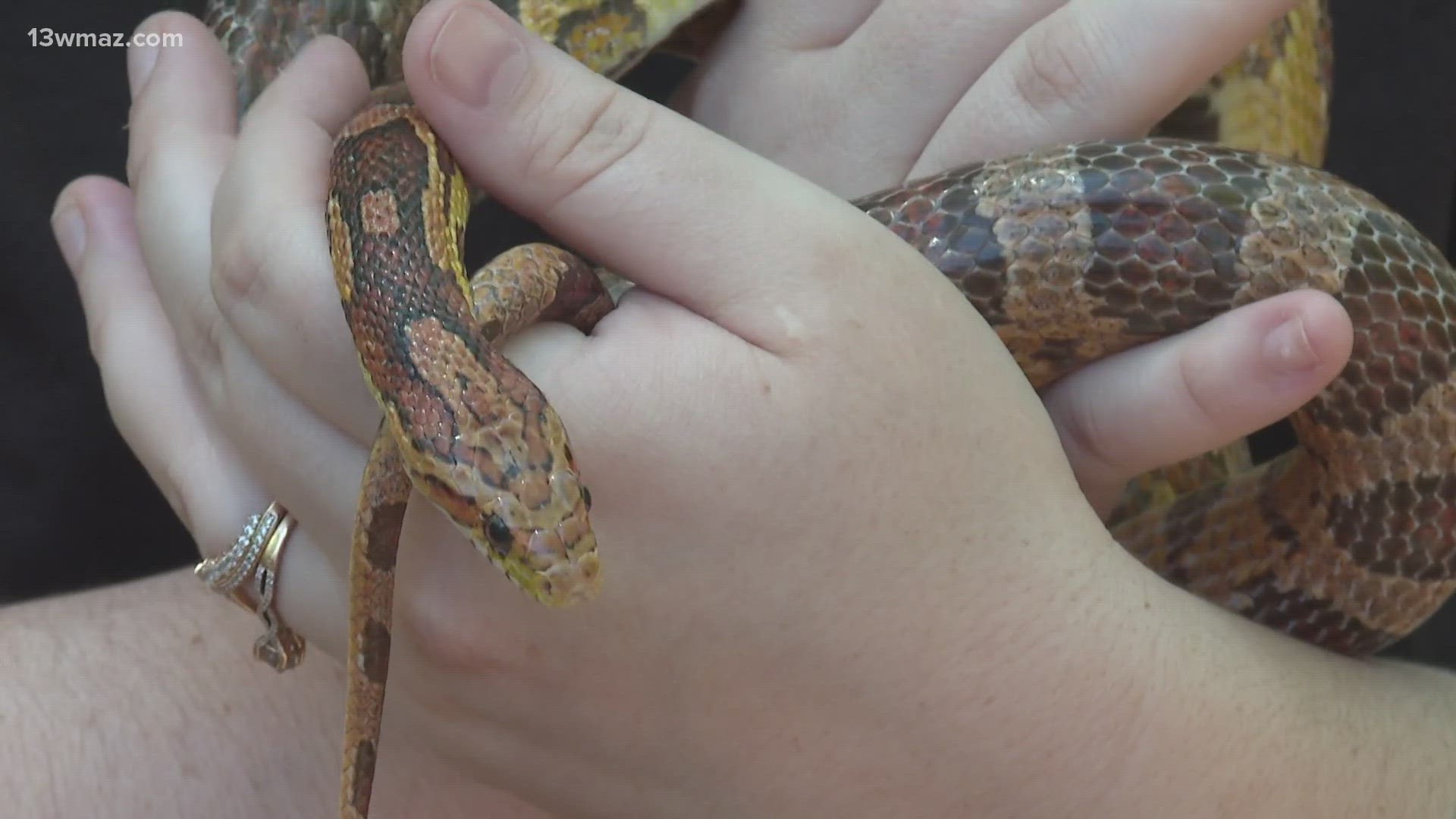MACON, Ga. — Georgia is blessed -- or maybe cursed -- to be home to 47 species of snakes. Chances are if you're outside during the summer, there's a snake or two nearby.
How can we tell which ones to watch out for?
First, we learned some snake basics from the Museum of Arts and Sciences' Curator of Wildlife Sciences Jerrica Madden-Baker.
She says snakes won't eat anything that's bigger than their girth, including small children.
"Even venomous ones are not going to chase you," Madden-Baker said.
Basically, they're antisocial, and they can't even regulate their own body temperature.
"They're going to depend on the sun to warm up, so if they get too hot, they might crawl under a big brush pile or wood piles because that's going to cool them down," she said.
Raptor Program Director Pete Griffin has some sssssimple advice.
When you see a snake, "Kind of just point it out, take a picture, and walk off," Griffin said. "Main thing is, don't pick them up."
Some snakes will tolerate being held. Junior Journalist Will Rodgers was the first to volunteer.
"Probably not going to get up close with one in my yard," Will said.
Griffin says pine snakes are often mistaken for rattlesnakes. It's important to know the venomous snakes.
"You got the Eastern Coral Snake, Cottonmouth, Copperhead. Then you got the Eastern Diamondback Rattlesnake, Dusky Pygmy Rattlesnake and then Canebrake or Seminole Rattlesnake," listed Griffin.
Ultimately, he says, "There's no such thing as a good snake or a bad snake -- they're all good snakes."
How can you tell if they are venomous? Here's what you need to know about the slithering reptiles.
Georgia Department of Natural Resources (DNR) Senior Wildlife Biologist Daniel Sollenberger said seldomly the snake you encounter is venomous. According to the Georgia DNR, only six of the 46 species native to Georgia are venomous, and only one – the copperhead -- flourishes in suburban areas.
Venomous snakes in Georgia
- Copperhead
- Pigmy Rattlesnake
- Timber Rattlesnake
- Cottonmouth
- Eastern Diamondback Rattlesnake
- Eastern Coral Snake
"While at least one of the state’s six species of venomous snakes could be found in each county in the state, seldom are they the most common species encountered,” Sollenberger said.
What to do and not to do
If you encounter a snake, Georgia DNR said you can try to identify it from a safe distance by using its venomous snakes of Georgia list. Georgia DNR said do not attempt to handle the snake and give it plenty of space.
Also, the DNR said to remember that snakes are predators that feed on small mammals, amphibians, insects or even other serpents.
According to Georgia DNR, "there is no need to fear non-venomous snakes." The DNR added that Georgia's native non-venomous species are protected by state law; another one, the eastern indigo is federally protected.
If the snake is clearly identified as venomous, the DNR said it's a danger to people and pets. You can also consult Georgia DNR for a private wildlife removal specialist.
Nonvenomous snakes in Georgia
- Eastern Green Watersnake
- Brown Watersnake
- Plain-bellied Watersnake
- Banded Watersnake
- Northern Watersnake
- Queen Snake
- Striped Crayfish Snake
- Glossy Crayfish Snake
- Black Swamp Snake
- Brown Snake
- Florida Brown Snake
- Red-bellied Snake
- Eastern Ribbon Snake
- Common Garter Snake
- Smooth Earth Snake
- Rough Earth Snake
- Eastern Hognose Snake
- Southern Hognose Snake
- Ringneck Snake
- Eastern Worm Snake
- Pine Woods Snake
- Mud Snake
- Rainbow Snake
- Black Racer
- Coachwhip
- Rough Green Snake
- Corn Snake
- Eastern Rat Snake
- Gray Rat Snake
- Pine Snake
- Common Kingsnake
- Black Kingsnake
- Mole Kingsnake
- Scarlet Kingsnake
- Eastern Milk Snake
- Scarlet Snake
- Southeastern Crowned Snake
- Florida Crowned Snake
- Eastern Indigo Snake
- Brahminy Blind Snake (non-native)
While there are far fewer venomous snakes in Georgia, the DNR said to use caution around an unidentified snake. To learn more about the different types of snakes in Georgia, click here.
(Source: WXIA)

